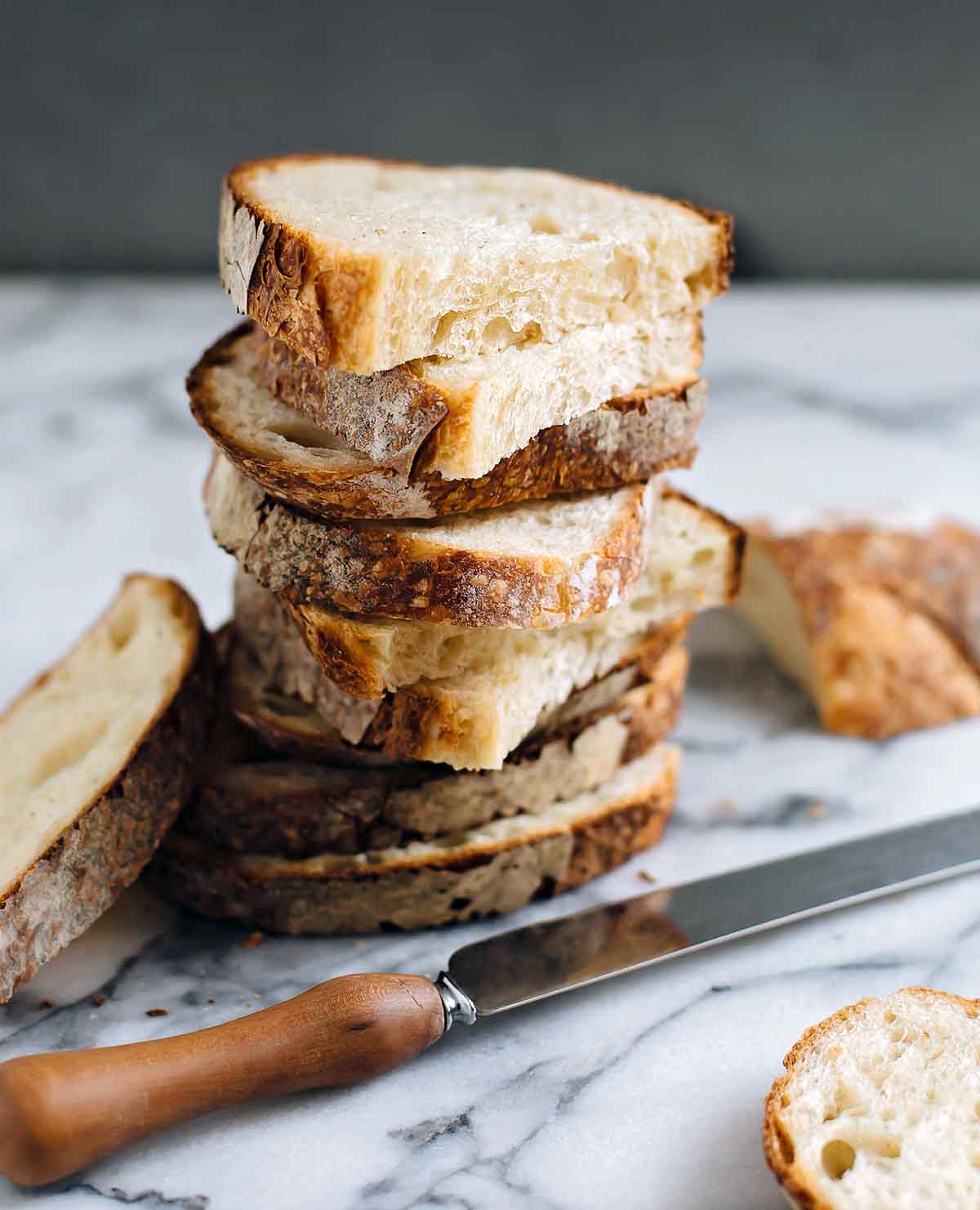
☞ LEARN MORE, READ: HOW TO DRY SOURDOUGH STARTER
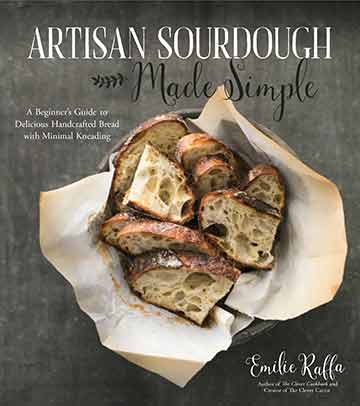
Sourdough starters can be made a few different ways, with methods that include fruit juices, grapes, honey, and even potatoes to boost natural fermentation. In my experience, all you need are two simple ingredients: flour and water. Once combined, the culture will begin to ferment, developing the wild yeasts and bacteria needed to make your bread rise.
When creating a sourdough starter, it’s important to begin with whole-grain flour to jumpstart the fermentation process. Whole wheat, rye, and spelt flour are great choices. Temperature and location also play important roles, so for best results, find a warm spot for your starter to thrive. My starter lives in a cozy cabinet right next to the fridge.
As for what to expect, the overall process will take about seven days from start to finish. My best advice is to be flexible with timing because developing yeast can be unpredictable. Your starter is ready when it has doubled in size, with plenty of bubbles on the surface and throughout the culture. [Editor’s Note: And for additional advice, listen to our interview with sourdough starter expert Andrew Janjigian, head bread guru for Cook’s Illustrated and America’s Test Kitchen.]
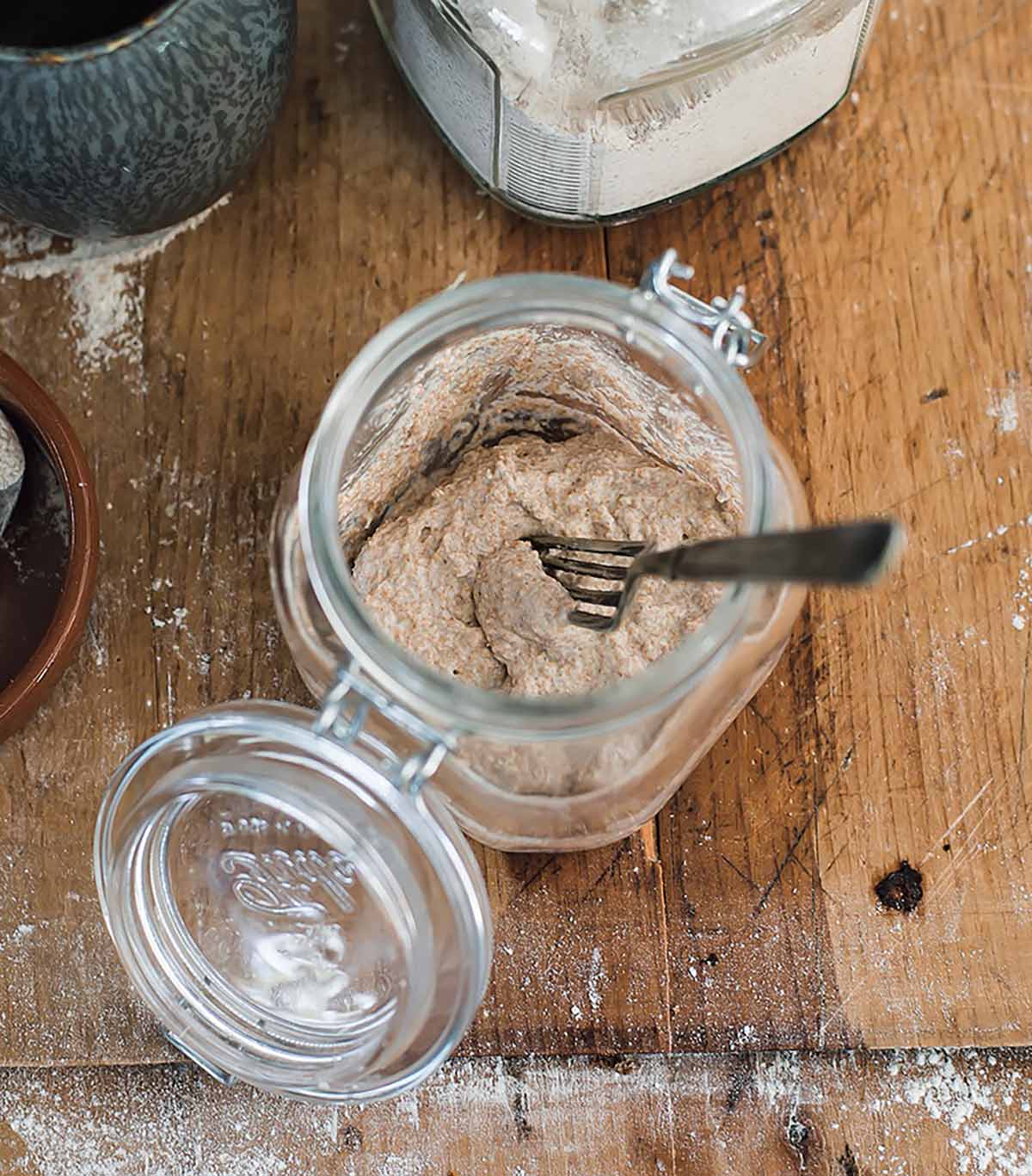
Day 1
Add 60 grams (1/2 cup) of whole wheat flour and 60 grams (1/4 cup) of water to a large glass jar. Mix with a fork to combine; the consistency will be thick and pasty. If measuring by volume, add more water to thin out the texture. Cover loosely with plastic wrap or a small cloth and let it rest in a warm spot for 24 hours. (See photo Day #1 above)
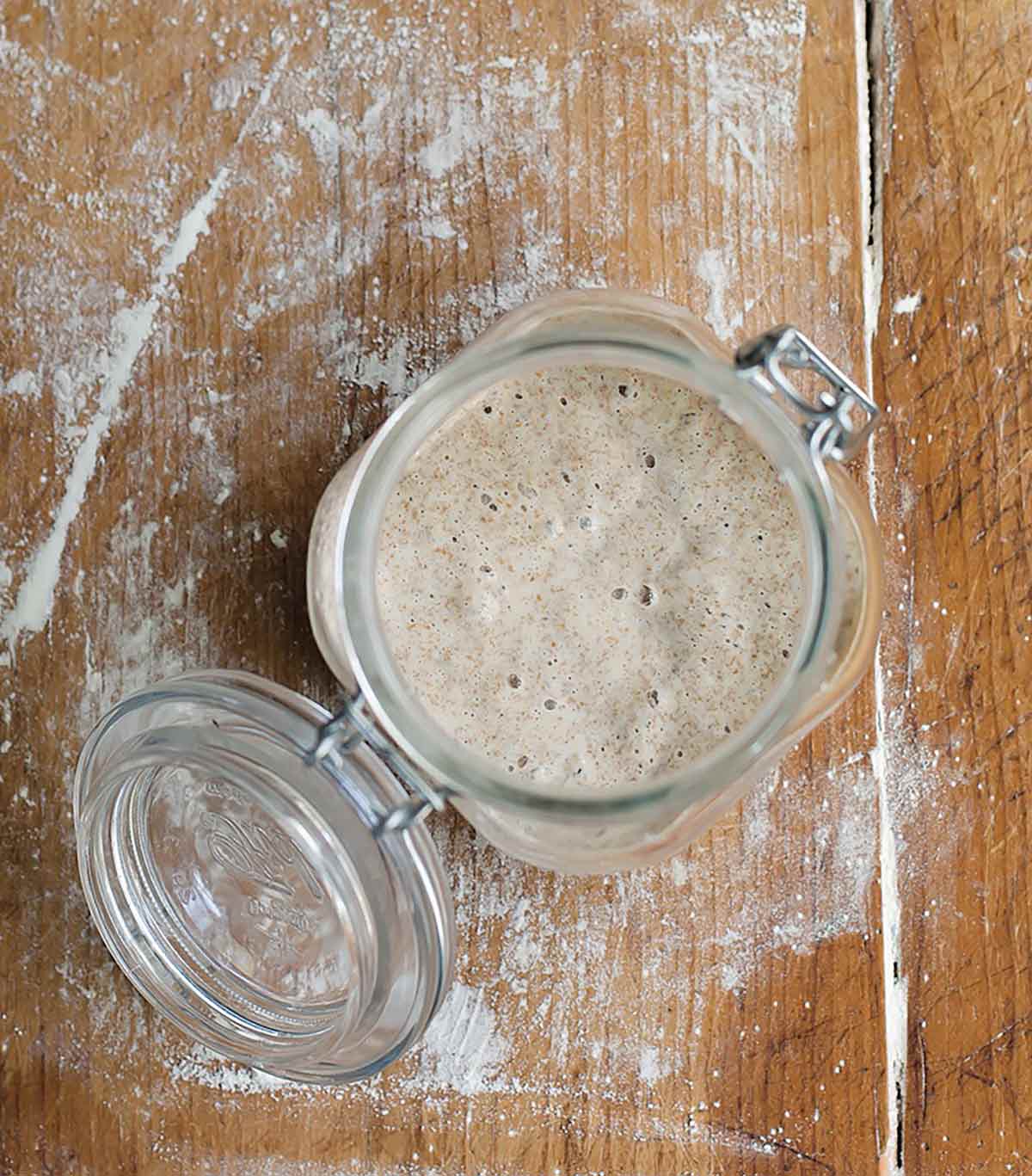
Day 2
Check to see whether any bubbles, which may look like small black dots, have appeared on the surface. Bubbles indicate fermentation. It’s okay if you don’t see anything, as the bubbles might have appeared and dissolved overnight while you were sleeping. Rest the starter for another 24 hours. (See photo Day #2 above)

Day 3
Whether bubbles are visible or not, it’s time to start the feeding process. To begin, remove and discard approximately half of your starter from the jar. The texture will be very stretchy. Add 60 grams (1/2 cup) of all-purpose flour and 60 grams (1/4 cup) of water. Mix with a fork until smooth. (See photo Day #3 above) The texture should resemble thick batter or plain yogurt at this point, so add more water as needed. Cover loosely and let rest for another 24 hours.
Want to Save This?

Days 4, 5, and 6
Repeat the feeding process outlined on Day 3. As the yeast begins to develop, your starter will rise and bubbles will form on the surface and throughout the culture. (See photo Days #4,5, and 6 above) When the starter falls, it’s time to feed it again. Tip: Place a rubber band or piece of masking tape around the jar to measure the starter’s growth as it rises.
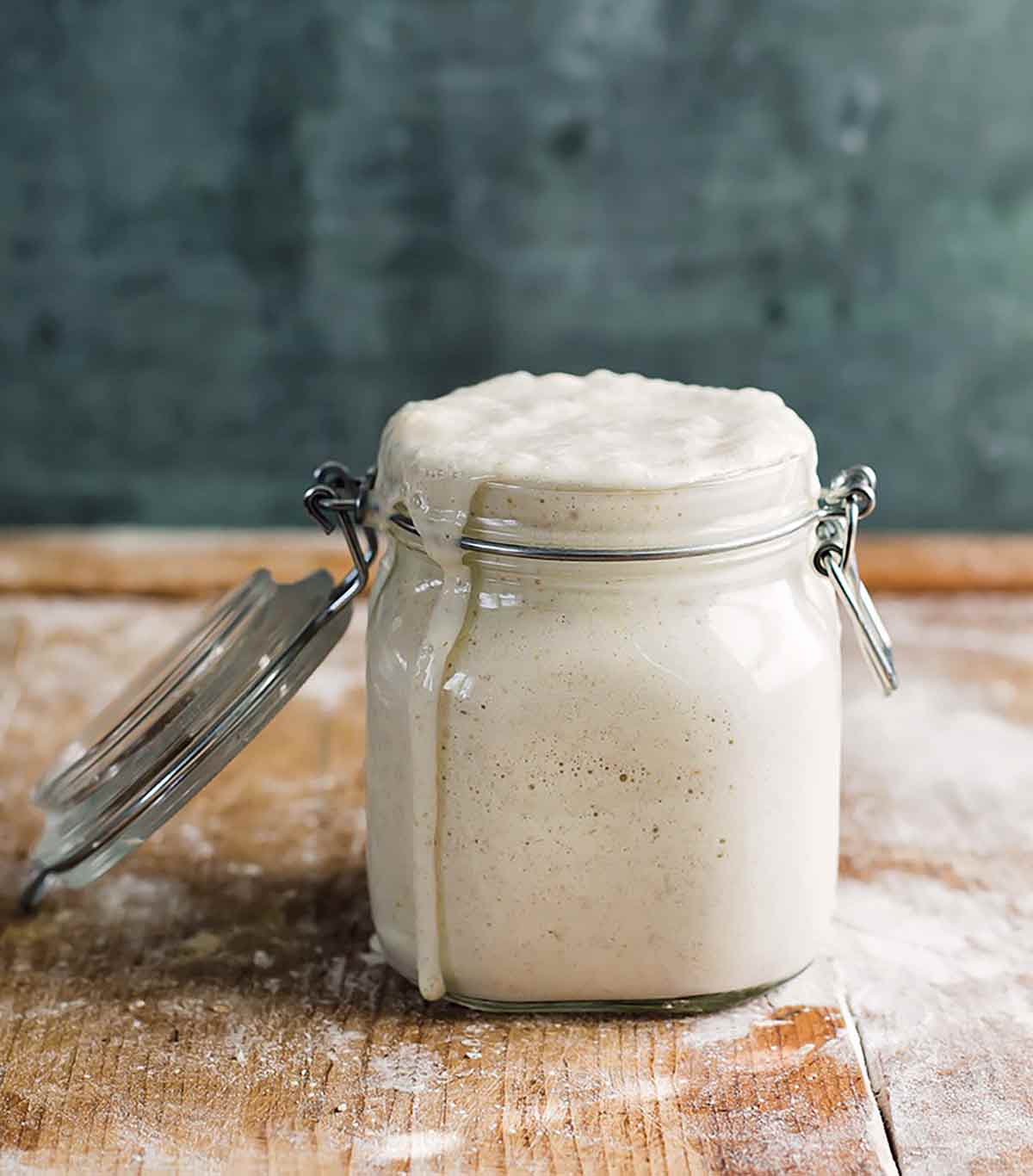
Day 7
By now, you should see plenty of bubbles, both large and small. The texture will be spongy and puffy, similar to roasted marshmallows. (See photo Day #7 above) Take in the aroma. It should smell pleasant and not astringent. If these conditions are met, your starter is now active and ready to use. Tip: If your starter is not ready at this point, which is quite common, continue the feeding process for one to two weeks more (or longer).
The very last step is to transfer your starter to a nice, clean jar. In keeping with tradition, you can also name it. [Editor’s Note: And the second-to-last step is to bake a batch of easy sourdough bread.]
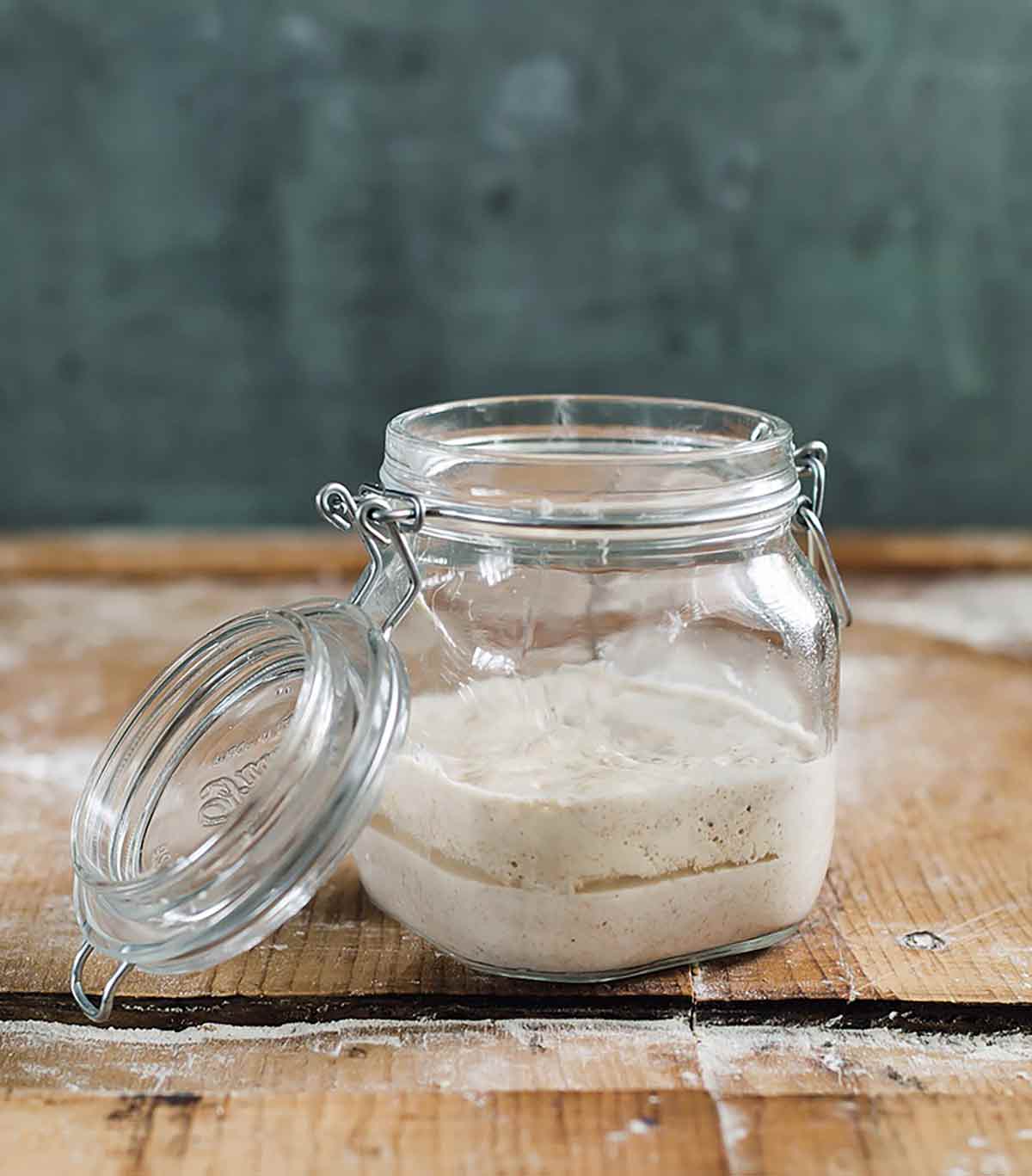
What is hooch?
During the creation process, and even after your starter has been established, you may notice a dark residual liquid on the surface or throughout the culture. It has a very distinctive smell, similar to rubbing alcohol or gym socks. This liquid is called “hooch” and is an indication that your starter needs to be fed. Any time you see this liquid, it’s best to remove it (if possible) along with any discolored starter present. Some bakers choose to stir this liquid back into their starter, which can add a more sour flavor to the dough. However, in my opinion, hooch is wasted energy and is not always ideal to use. (The image above shows a layer of hooch in a starter.)
How to dry sourdough starter
What if you made way too much starter. Or want to stop baking for a while and don’t want to bother feeding it. Or, maybe, you want to gift some to a friend, you can dry it and store it indefinitely. That way nothing is wasted.
Chat with us
Have a cooking question, query, or quagmire you’d like us to answer? Click that big-mouth button to the right to leave us a recorded message. Just enter your name and email address, press record, and talk away. We’ll definitely get back to you. And who knows? Maybe you’ll be featured in these pages or–just maybe–on our podcast, Talking With My Mouth Full.










Help!
I found the rye starter recipe from this site and have been keeping my starter alive for about a year and a half. Today I pulled it out of the fridge to make a loaf of bread. It is resting before I put it in the oven to bake and I just realize I didn’t reserve any to put back into the fridge.
I thought I’d pinch some off before baking it to restart it but I added milk and oil to the bread dough and worry it might contaminate a starter. Then I vaguely remember my mother told me in the olden days they would just take a crust of baked bread and ferment that to keep making more. Do you know how that is done?
Patti, I’m not familiar with that method but if any of our readers are we’d love to hear from you.